
Concept explainers
(a)
Interpretation:
The structure of the nucleophile that could be used to convert the iodoethane into
Concept introduction:
The nucleophilic substitution reactions are the reactions in which one nucleophile is substituted by the other nucleophile. These reactions depend upon the nucleophilicity and concentration of the incoming nucleophile.
The
Answer to Problem 9.52AP
The structure of the nucleophile that could be used to convert them into
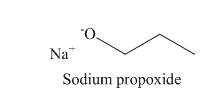
Explanation of Solution
The
The reaction that takes place to convert the iodoethane into the
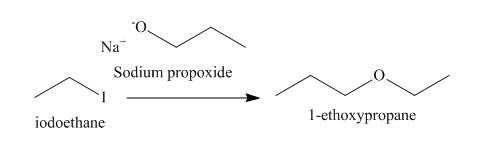
Figure 1
The structure of the nucleophile that could be used to convert the iodoethane to give

Figure 2
The structure of the nucleophile that could be used to convert the iodoethane to give the given compound is shown in Figure 2.
(b)
Interpretation:
The structure of the nucleophile that could be used to convert the iodoethane to give the
Concept introduction:
The nucleophilic substitution reactions are the reactions in which one nucleophile is substituted by another nucleophile. These reactions depend upon the nucleophilicity and concentration of the incoming nucleophile.
The
Answer to Problem 9.52AP
The structure of the nucleophile that could be used to convert the iodoethane to give the
Explanation of Solution
The
The reaction that takes place to convert the iodoethane into
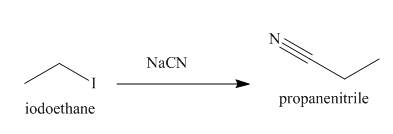
Figure 3
The structure of the nucleophile that could be used to convert the iodoethane to give the
The structure of the nucleophile that could be used to convert the iodoethane to give the
(c)
Interpretation:
The structure of the nucleophile that could be used to convert the iodoethane to give the given compound is to be stated.
Concept introduction:
The nucleophilic substitution reactions are the reactions in which one nucleophile is substituted by another nucleophile. These reactions depend upon the nucleophilicity and concentration of the incoming nucleophile.
The
Answer to Problem 9.52AP
The structure of the nucleophile that could be used to convert the iodoethane to give the given compound is shown below.
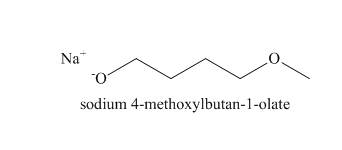
Explanation of Solution
The
The reaction that takes place to convert the iodoethane into the given compound is shown below.

Figure 4
The structure of the nucleophile that could be used to convert the iodoethane to give the given compound is shown below.

Figure 5
The structure of the nucleophile that could be used to convert the iodoethane to give the given compound is shown in the Figure 5.
(d)
Interpretation:
The structure of the nucleophile that could be used to convert the iodoethane to give the given compound is to be stated.
Concept introduction:
The nucleophilic substitution reactions are the reactions in which one nucleophile is substituted by another nucleophile. These reactions depend upon the nucleophilicity and concentration of the incoming nucleophile.
The
Answer to Problem 9.52AP
The structure of the nucleophile that could be used to convert the iodoethane to give the given compound is shown below.
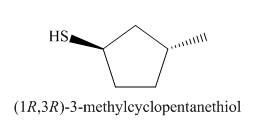
Explanation of Solution
The
The reaction that takes place to convert the iodoethane into the given compound is shown below.

Figure 6
The structure of the nucleophile that could be used to convert the iodoethane to give the given compound is shown below.

Figure 7
The structure of the nucleophile that could be used to convert the iodoethane to give the given compound is shown in the Figure 7.
(e)
Interpretation:
The structure of the nucleophile that could be used to convert the iodoethane to give
Concept introduction:
The nucleophilic substitution reactions are the reactions in which one nucleophile is substituted by another nucleophile. These reactions depend upon the nucleophilicity and concentration of the incoming nucleophile.
The
Answer to Problem 9.52AP
The structure of the nucleophile that could be used to convert the iodoethane to give
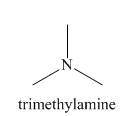
Explanation of Solution
The
The reaction that takes place to convert the iodoethane into

Figure 8
The structure of the nucleophile that could be used to convert the iodoethane to give

Figure 9
The structure of the nucleophile that could be used to convert the iodoethane to give
Want to see more full solutions like this?
Chapter 9 Solutions
Organic Chemistry
- Write all of Me Possible Products For each Of the Following reactions. In each case identity all pains of enantiomers, all digsterzoners and all Meso compounds 9. 11-60 11-0-11 V-G Η Η H ~ C-11 +HB+ - 1 H b. पन्ना 171-0-11 H-C-H Н C-C=c-call +HBr Perendez ==arrow_forwardHow can i draw the mechanisms for this molecule?arrow_forwarda. Discuss and explain he difference IN Stability between the Chai and Boat Гольцу от судомехане b. For the Following Molecule draw both possible Clain conformations and explain which one is more stable and for what Reason. H. CH₂ CH₂ H "Harrow_forward
- Please provide the mechanism for this reacitonarrow_forwardQuestion 5: Name the following compound in two ways using side chain and using prefix amine (Common name and IUPAC name both) CH3NH2 CH3CH2NHCH3 CH₂CH₂N(CH3)2 Draw the structure of diethyl methyl amine Question 6. Write the balanced combustion reaction for: a. Hexane b. Propyne c. 2-pentene Question 7: Write the following electrophilic substitution reactions of benzene: Hint: Use notes if you get confused a. Halogenation reaction: b. Nitration reaction : c. Sulphonation reaction: d. Alkylation reaction: e. Aceylation reaction:arrow_forwardQuestion 4. Name the following structures ○ CH3-C-N-H H CH3CH2-C-N-H H CH3CH2-C-N-CH3 Harrow_forward
